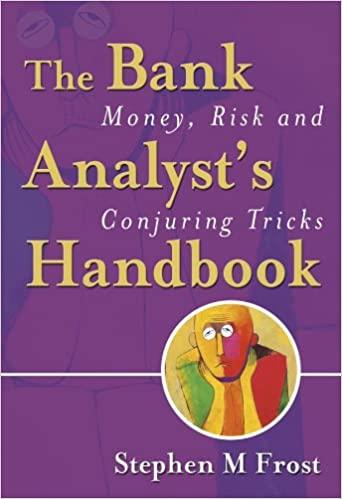Question
Suppose you have two stocks (A and B) in your portfolio, worth $220,000 and $180,000 respectively. The annual volatility is 0.24 and 0.32 respectively. The
Suppose you have two stocks (A and B) in your portfolio, worth $220,000 and $180,000 respectively. The annual volatility is 0.24 and 0.32 respectively. The correlation between the two stocks is 0.38. Please calculate the 10-day, 97% VaR and ES (expected shortfall) for the two positions separately and for the portfolio. How much is the VaR reduction in the portfolio? How much is the ES reduction in the portfolio? Re-calculate the portfolio VaR and ES and the corresponding reductions assuming a correlation of -0.38 and 1.0. What can you conclude? (for accuracy and convenience, it is easier to set up the calculation in a spreadsheet. Also, assume 252 days in a year.)
Suppose you add Stock C to your portfolio. Stock C has an annual volatility of 0.18. The additional correlations are AC=0.45 and BC=0.52. Keeping the total investment at $400,000, and assuming that achieving the lowest VaR (or ES) is the only objective, what is optimal allocation among the three stocks? Do you need to short any stocks? What would be the optimal allocation if shorting is not allowed? (Hint: please use Solver in Excel. Also, do the question for both values of AB, 0.38 and-0.38.)
Suppose the three stocks all have the same annual volatility of 0.28 and all pair-wise correlations are 0.45. What is the optimal allocation of the $500,000 to achieve the lowest VaR or ES? What if they still have the same volatility of 0.28, but the correlations are AB=0.25, AC=0.45, and BC=0.65?
Step by Step Solution
There are 3 Steps involved in it
Step: 1

Get Instant Access to Expert-Tailored Solutions
See step-by-step solutions with expert insights and AI powered tools for academic success
Step: 2

Step: 3

Ace Your Homework with AI
Get the answers you need in no time with our AI-driven, step-by-step assistance
Get Started


